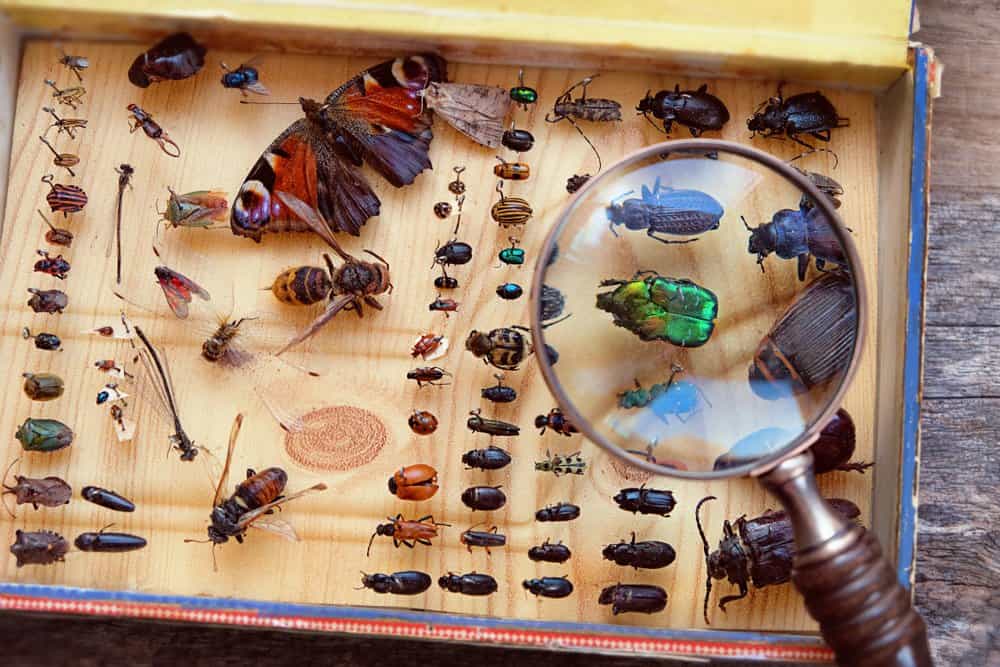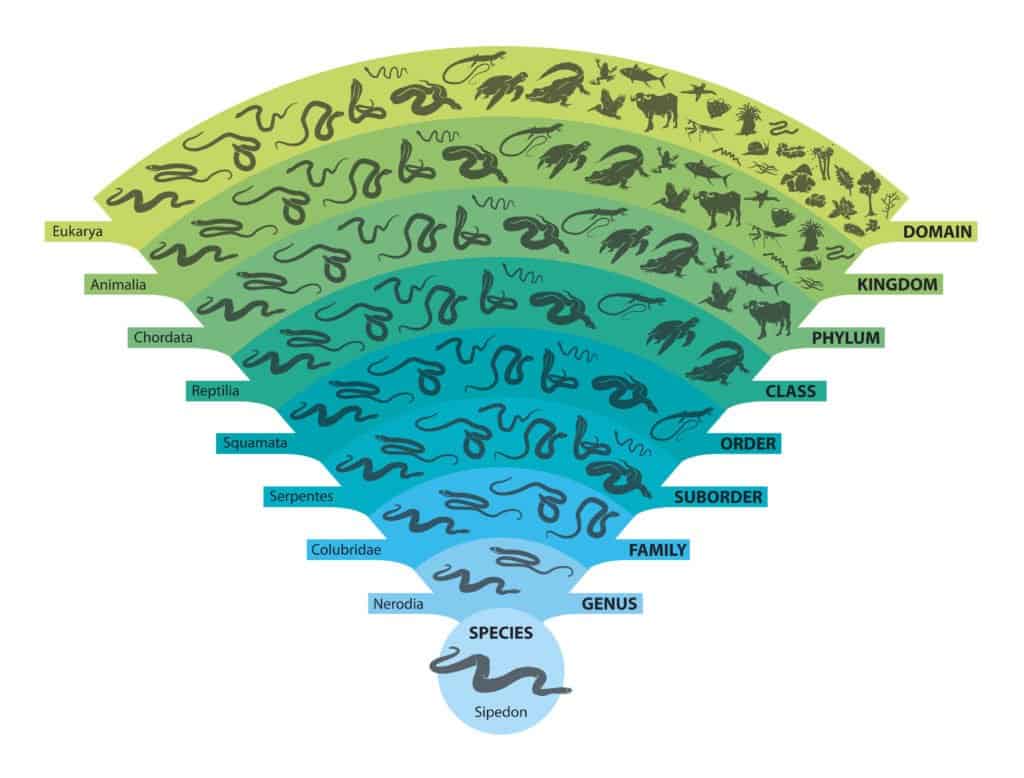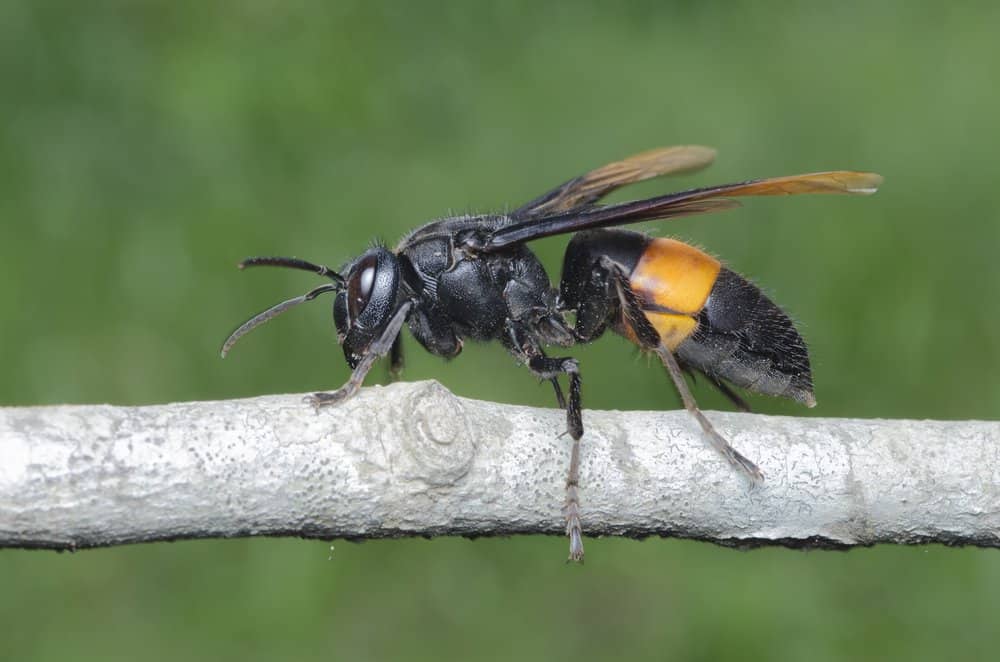Key Points:
- Insects are considered animals because they reproduce sexually, breathe oxygen, consume organic material, and are able to move.
- There are about one million described species of insects, which make up about 70% of all animal species. However, scientists believe there could be as much as 5 million existing species of insects!
- In general, insects have six legs, three body segments, and two antennae. The millipede is not considered an insect because it has up to 750 legs and sometimes hundreds of body segments. It belongs in its own class named Diplopoda which includes more than 12,000 described species.
To date, scientists have identified about 1,744,204 (or 1.74 million) species of insects.
That’s an impressive number, but a mere drop in the bucket compared to the number of species waiting to be discovered. Recent estimates place the number of species in the natural world anywhere between 8.7 million and over a trillion!
But the estimate includes plants, single-celled organisms, and even algae. Considering, a more appropriate question might be: How many animals are on Earth? And more importantly, just what is an animal? Is an insect an animal? Are bacteria? Let’s dig in a little deeper.

Scientists believe there are between 8.7 million and 1 trillion species of insects on earth–they do fall under the classification of animals.
©ju_see/Shutterstock.com
Is an Insect an Animal?
Yes, insects are definitely animals. Now let’s dig into why.
Looking at our handy Animal Classification Guide, we see the highest level of taxonomy is ‘Domain.’

Based on their taxonomy, insects have been determined to be animals.
©EreborMountain/Shutterstock.com
Archaea, Bacteria, and Eurkarya are the three taxonomic domains. The first two include mostly single-celled organisms, but only Eukarya features organisms with cellular nuclei. Does that mean everything in Eukarya is an animal? No. To reach that point we need to move down a rung to ‘Kingdoms.’
After all, trees are multiple cell organisms with nuclei, but a tree is obviously not an animal! That’s why at a ‘Kingdom’ level there is a classification known as Animalia, or animals. Species grouped in animals share a number of common traits:
- Reproduce sexually
- Breathe oxygen
- Consume organic material
- Are able to move
With a low number of exceptions, all animals meet these basic criteria. So the next time someone asks you, “are insects animals?” You can answer “yes,” because they reproduce sexually, breath oxygen, consume organic material, and are able to move.
What Percentage of the World’s Animals Are Insects?
Now that we’ve established that insects are animals, let’s dig into just what percentage of the animal kingdom is insects.
The short answer: A lot. Today there are about one million described species of insects. That’s about 70% of all animal species. In total, invertebrates (which includes arachnids, crustaceans, insects, and other species) are 96% of all identified animal species.
When you compare the number of insects (under the ‘Class’ Insecta), you see the staggering biodiversity of insects.

In total, invertebrates, which includes arachnids, crustaceans, insects, and other species, make up 96% of all identified animal species.
©Protasov AN/Shutterstock.com
Number of Species (Chapman, 2009)
- Insects: ~1,000,000
- Mammals: 5,487
- Birds: 9,990
- Reptiles: 8,734
- Fish: 31,153
- Amphibians: 6,515
Most importantly, the percentage of insects compared to other animals should continue to grow in the decades to come. Climate change in particular is a major factor in the estimated growth of insect populations. While other animals will have to contend with issues like loss of habitat and food sources due to higher temperatures and more extreme weather events, insects will thrive. Scientists posit that as global temperatures rise, so will insects’ metabolic and reproductive rates.
For example, researchers believe there may be about a dozen undiscovered/undescribed mammal species across the world. Put another way, 99.9% of mammal species have been discovered.
(Maybe Bigfoot is out there… but don’t hold your breath!)
A chart below compares just how massive the number of undiscovered insects may be!
| Group | Described Species | How Many Exist (Est) |
|---|---|---|
| Mammals | 5,487 | ~5,500 |
| Reptiles | 8,734 | ~10,000 |
| Fish | 31,153 | ~40,000 |
| Birds | 9,990 | >10,000 |
| Amphibians | 6,515 | ~15,000 |
| Insects | ~1,000,000 | ~5,000,000 |
Today, about 70% of the world’s animals are insects. But in the future, insects and invertebrates could constitute more than 99% of all animal species!
You may wonder–how do scientists come up with such a large estimate of undiscovered insects? For one, advancements have provided better statistical tools as well as new data. It’s estimated that there are 5.5 million of species of insects, though only 1 million of the species are named. It’s estimated that there are are as much as 30 million species of insects extant, a truly amazing discovery! Scientists believe that 80% of existing insects remain undiscovered.
So which insect dominates in numbers? Believe it or not, the largest family of insects is the beetle family. There’s an estimated 1.5 million species of beetles alone! But even that number is not a given–according to one study, there could be a bit over 2 million species. Of those species, scientists have only described 350,000 different beetle species. So, let’s narrow all this data down to a raw number your brain can process: beetles are estimated to make up at least 40% of the insect kingdom (and that’s a conservative estimate–some experts put that number at 50%)!
What Is an Insect?
We’ve identified that:
- Insects are animals, and
- There are significantly more unknown insect species than there are mammals, reptiles, fish, birds, and amphibian species combined (and it’s not even close!)
Insects are part of a family of animals called arthropods. Other arthropods include: crabs, crayfish, millipedes, centipedes, spiders and scorpions. The word “arthropoda” literally means “jointed foot.” All arthropods are the same in that they have an exoskeleton, a segmented body, bilateral symmetry (meaning that both sides of the animal are exactly the same), and pairs of jointed appendages (legs, arms, antennae, etc). Where insects differ from other arthropods is in the amounts of the segmented body parts or pairs of appendages they have.
To reiterate, the insect has three segmented body parts–head, thorax, abdomen. A crustacean differs from an insect because it has only two segmented body parts–a head and thorax. Most people already recognize why a spider is not classified as an insect–while the insect only has six legs, all spiders have eight legs.
So now let’s dive deeper into what, exactly, constitutes an insect by looking at some incredible invertebrates.
Why the Millipede is Not an Insect
While we might call anything that crawls along the ground an ‘insect,’ in reality many small invertebrates aren’t.
Insects generally have six legs, three body segments, and two antennas. Compare this to the millipede which has up to 750 legs (fun fact: no millipede actually has a thousand legs!) and sometimes hundreds of body segments!
So while a millipede might be small, crawl on the ground, and have an exoskeleton, it’s actually not an insect but its own ‘Class’ named Diplopoda that includes more than 12,000 described species.
And here’s something mind-blowing: millipedes might be small today, but that’s wasn’t always the case. Three hundred million years ago, some millipedes grew larger than humans! Scientists theorize that their massive size was possible thanks to incredible levels of oxygen in the Earth’s atmosphere at the time.

The millipede, technically an anthropod, not an insect, is still considered to be part of the animal kingdom. Three hundred million years ago, some millipedes grew larger than humans.
©Vikorn Phartchayapruti/Shutterstock.com
The Asian Giant Hornet: An Insect
Is the Asian giant hornet an insect? The answer is “yes.” While the species flies, it has three body segments, six legs, two antennas, and three body segments.
In the United States alone there are more than 19,600 species of flies, 11,500 butterflies and moths, and 17,500 insects from the ‘Order’ that contains bees and wasps. That’s a lot of flying insects!
You’ve surely seen news stories about “murder hornets.” These giant wasps have been spotted across the United States in 2020 and raised significant media attention.
What’s the big deal? For starters, Asian giant hornets are voracious honeybee predators. A small group can completely wipe out a colony of 30,000-plus honeybees in just a couple of hours!
The Asian giant hornet isn’t really a murder hornet. About 40 people die a year form their stings in Asia, and most these deaths can be traced back to allergic reactions. However, their stringers are quite painful and best avoided!

Asian Giant Hornets are classified as insects because they have three body parts and six legs. They are very deadly animals, able to completely wipe out a colony of 30,000-plus honeybees in just a few hours.
©Ruzy Hartini/Shutterstock.com
What is an Animal?
We’ve looked at more details of what an insect is by definition, as well as what distinguishes it from other arthropods. But what is an animal?
For review, these basic traits are present in animals: they reproduce sexually; they breathe oxygen;
they consume organic material; and they are able to move. There are other characteristics common to species classified as animals:
- Animals are multicellular
- They have an eukaryotic cell structure
- They go through a blastula stage of development
- They have an advanced nervous system
But some of these traits are shared by other organisms in the other two kingdoms of living things–the plant kingdom and the fungi kingdom. For example, a parasitic plant can feed off the nutrients in a host plant for survival. And some plants can also reproduce sexually as well as asexually.
Mobility is a big feature that sets animals apart from other organisms. Animals have developed muscles, which allow them to travel. While many can travel great distances, some, such as sponges, are still classified as animals because they have been found to have the ability to travel very minute distances. The ability of animals to travel allows them to find mates to reproduce with, search for food, and escape or hide from predators.
The 9 Different Types of Insects
There are 9 basic orders of insects:
- Coleoptera–beetles
- Dictyoptera–cockroaches and mantids
- Diptera–flies
- Ephemeroptera–mayflies
- Lepidoptera–butterflies and moths
- Hymenoptera–ants, bees, and wasps
- Odonata–dragonflies and damselflies
- Orthoptera–grasshoppers and katydids
- Phasmida–stick insects
This is not an exhaustive list of all the insect types–there are actually almost 20 more orders of insects. Other orders include insects like bugs, fleas, termites, earwigs, sucking lice, and silverfish. The list goes on, and it’s no wonder, as we already stated that there are over 1 million identified species of insects!
Bugs vs. Insects: What Are The Differences?
Finally, you might be asking yourself “what’s the difference between an insect and a bug?” Like insects, bugs are definitely animals, but the question of how bugs and insects differ might be on your mind.
The word “bug” is often informal. Many people will simply use the word “bug” to refer to any crawly creature with legs. Under this definition, even animals that aren’t insects (like the example of millipedes above) would qualify as bugs.
A more formalized definition of a bug is an insect whose mouthparts pierce and suck. The order of insects that fall under this definition of the word “bugs” is Hemiptera. Examples of bugs under this more formalized definition include everything from bed bugs, to cicadas, to aphids, which are small sap-sucking insects.
How Many Insects Are in the World Today?
With insects on every non-Arctic landmass across the world, you might be wondering: “How many insects are in the world?”
It’s nearly impossible to count insects, but scientists estimate their populations and most believe that roughly 100 trillion ants roam the world! Put another way, their “biomass” may be as much as all humans combined — even with our weight differentials factored in!
The total number of every type of insect was estimated by the Smithsonian at 10 quintillion. If we write that out, the number of insects in the world today is 10,000,000,000,000,000,000 insects on Earth!
How are there so many insects in the world today? Well, just a single “super ant colony” stretches 3,700 miles along the Mediterranean coast, and ants aren’t even a fraction of total insects.

Ants are one of the most numerous groups of insects on the planet. Roughly 100 trillion of these animals are believed to roam the world.
©Elizaveta Galitckaia/Shutterstock.com
And there you have it, the low down on insects! Next up: New Monkey Species Found in Myanmar!
Up Next…
- Is the Spider an Insect? Let’s settle this question once and for all in this deep dive into the characteristics of insects vs spiders.
- Discover 15 Amazing Animals That Eat Insects Some animals feed on insects for their survival. Here’s a list of 15 that do just that.
- Killer Bee vs Honey Bee: What are the Differences? What differentiates the greatly feared killer bee from the common honey bee? Read this fascinating article to find out.
The photo featured at the top of this post is © Gary Alpert / CC BY-SA 3.0 – License / Original
Thank you for reading! Have some feedback for us? Contact the AZ Animals editorial team.






